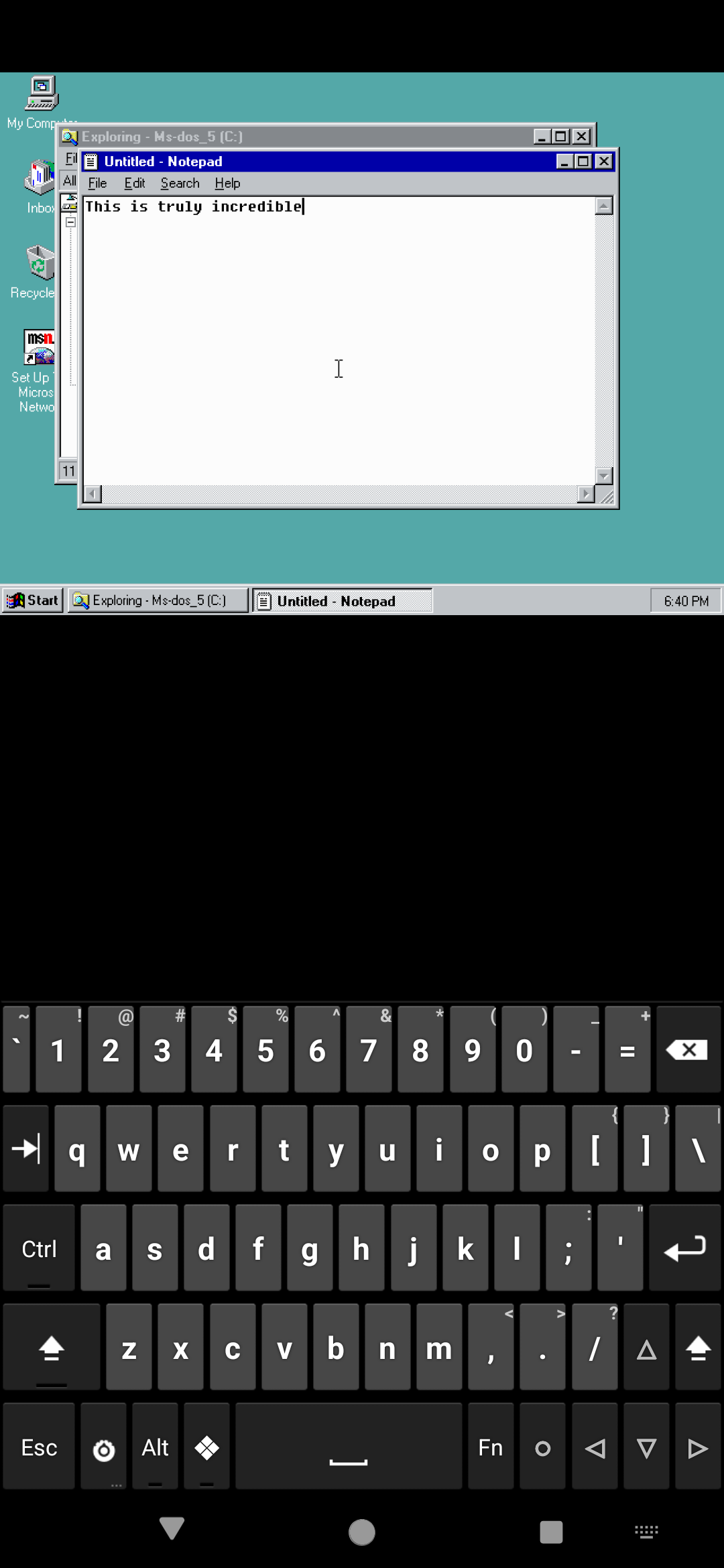I would recommend using multiple versions of windows, and maybe running it all in a VM in a web browser on Android,

From Wikipedia, the free encyclopedia
Linux is a family of open source Unix-like operating systems based on the Linux kernel, an operating system kernel first released on September 17, 1991 by Linus Torvalds. Linux is typically packaged in a Linux distribution (or distro for short).
Distributions include the Linux kernel and supporting system software and libraries, many of which are provided by the GNU Project. Many Linux distributions use the word "Linux" in their name, but the Free Software Foundation uses the name GNU/Linux to emphasize the importance of GNU software, causing some controversy.
Community icon by Alpár-Etele Méder, licensed under CC BY 3.0
I would recommend using multiple versions of windows, and maybe running it all in a VM in a web browser on Android,

Fewer steps than yours, but I'll claim this as a win in the "purity" field where you have to stop at the first layer where you can run a Windows app.
Linux on a RISC-V device -> container -> qemu-user + binfmt -> x86 VM software -> FreeBSD -> Linux binary compatibility -> Wine -> Windows app
I don’t remember the exact process but I ran Linux on computer A and windows on computer B. I installed windows onto a second drive on computer B and set Virtual box on computer A to use that drive as its boot drive over the network. I then shared the primary drive as well so I could boot computer B into either Windows install and run the other as a VM on Computer A.
I have no idea why I did this but it worked and no one was impressed.
"Because I can" is a perfectly viable reason. Messing around and doing ridiculous things is one of the best ways to learn.
I'm definitely impressed !
I'm impressed
I'm impressed
If the app is running on the same machine Windows is you haven't gone far enough, that's all i'll say.
I didn't think of that ! 🤯 There definitely would be a way to do something even stupider with multiple PC
Did you actually get that to run or is this a fun thought exercise? It seems like a lot of nested virtualization. If you’re clever enough maybe you could get Windows > WSL > WSL Wayland compatibility layer > Ubuntu Wayland session > LXC > Fedora > QEMU > macOS > Wine > Windows app
I really want to try it because I can't resist stupid projects, but I'm stuck on a crappy old Thinkpad for now, and it probably would die at step 1 install Windows 11 😅 So it's only theoretical for now, but I hope to try it whenever I get a new PC !
I needed to make a docker image based on Core OS (RedHat) and the docker host had to be RHEL compatible. My machine is Ubuntu. To get it to work, I installed Rocky Linux on LXC and docker inside that machine. Turns out there are a lot of security settings isolating LXC and restricting nested virtualization, but fortunately Canonical posts a 20 minute video explaining how to modify the permissions for that use case. I cannot imagine virtualizing much further without the machine refusing to comply!
Have you....you haven't...actually tested this out, have you? Surely someone wouldn't actually do this. Pics or didn't happen
Not sure about better but I can add a step. Fire up Microsoft word, then write a macro which outputs a shortcut that launches Internet explorer with a URL that loads and local HTML page which after 1 second redirects to a .exe. then click open instead of save as. That only works with really old school internet explorer of course not the modern edge version.
Start by installing Windows on your phone
Install Windows. Run the app.
I like you man you're chill
Do attempts without Windows as the first step count e.g running Windows in QEMU on Wine on Linux?
Also, depending on which version of WSL you used, you might be breaking your own rule with WSL on VMs since WSL2 uses Hyper-V. You might also be breaking it again with QEMU.
What actually counts as "VM software"? Are you defining it as a hypervisor, or does, for instance, emulating Linux on ARM in an emulator of a RISC V system in an emulator of a PowerPC system break the rule. In addition, do you mean consecutive VM software steps, or could I for instance emulate an ARM CPU that supports hypervisors and run a VM software in there?
So a windows application, or "Windows app" AKA remote desktop? Smh at Microsoft...
@phantomwise must the above steps actually be implemented, or is creative visualization good enough?
No but if anyone is crazy enough to try please share pics 😀
(I would try but... I only have an old laptop that can't even manage step 1... those Win 11 hardware requirements ) 💀